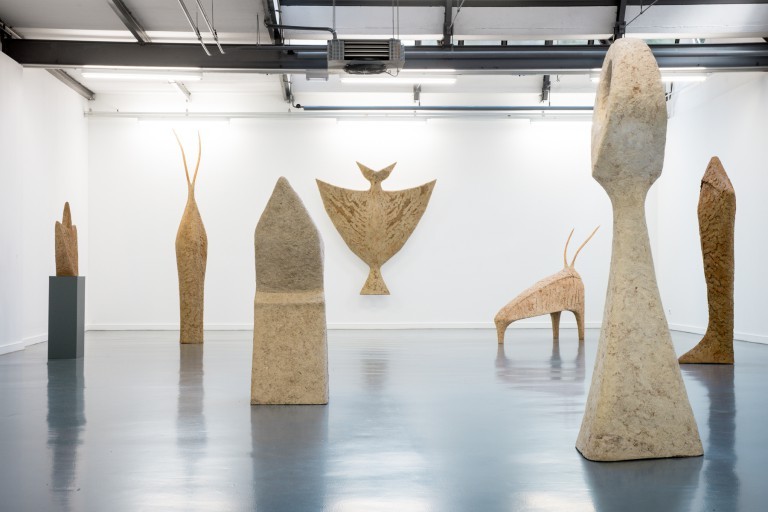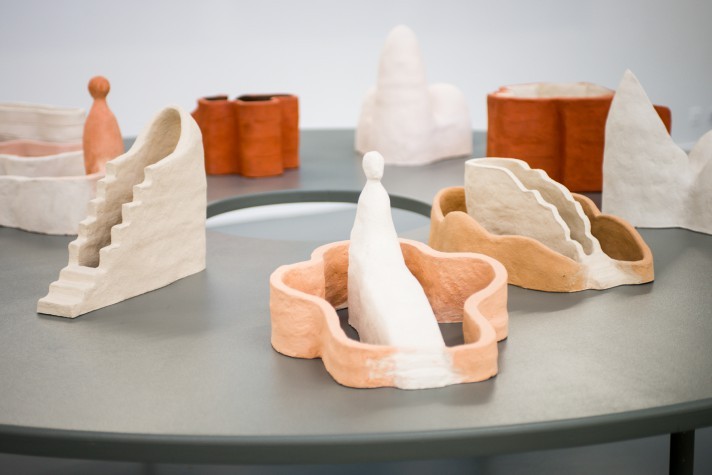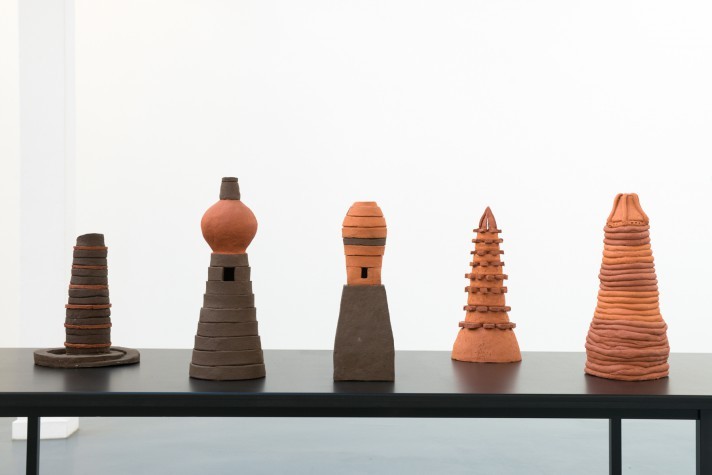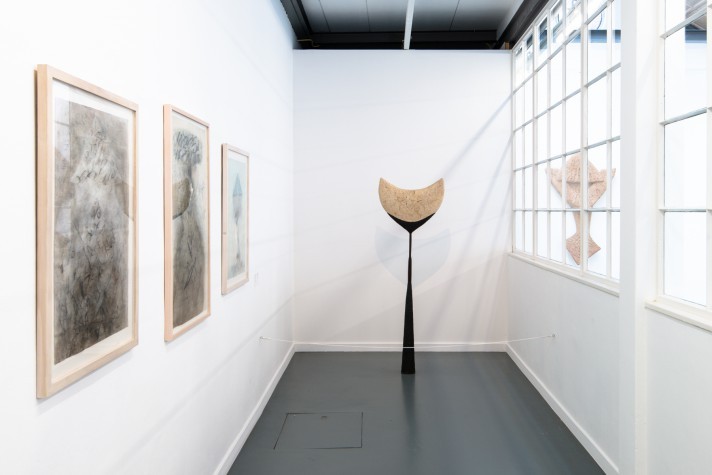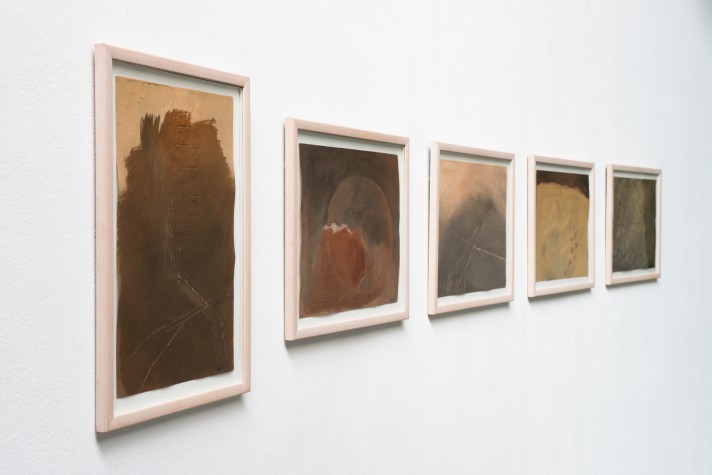Esma Yiğitoğlu
06 Oct - 04 Dec 2016
ESMA YIĞITOĞLU
The Back Room – Esma Yiğitoğlu
6 October – 4 December 2016
In the four-part series of solo exhibitions The Back Room, TENT and Museum Boijmans Van Beuningen jointly show underexposed but yet iconic Rotterdam artists. Curator Noor Mertens presents work of an older generation of artists, in the context of TENT’s current programming. This autumn, the work of artist Esma Yiğitoğlu is central in TENT, and this is also the final edition of this collaboration.
The Turkish artist Esma Yiğitoğlu (Zincidere, 1944 – Rotterdam 2009) left for Rotterdam at a very young age. She was the first Turkish student at the Willem De Kooning Academy and dedicated herself to a better social position of Dutch people with a Turkish background. Yiğitoğlu’s oeuvre consists of sculptures, drawings and paintings. The sculptures she has made, starting from the early nineties, have stylized, organic shapes which she created using natural materials such as paper pulp, loam and terracotta.
Although her work is primarily abstract, Yiğitoğlu’s sculptures often refer to archaic figures and architecture; they are related to Turkish amulets, Islamic graves and Egyptian sarcophaguses. With her work she explores the boundaries between the material world and an immaterial, spiritual world. However, Yiğitoğlu actually found herself at the beginning of a development of which the consequences have only recently become obvious. The period in which she worked was a time of cultural shifts, both in the world of art and in the Netherlands in general. Due to globalization and migration, a richly varied multicultural society came into being. Meanwhile, ‘global art’ was created, in which universal themes and local traditions very often crossed each other’s path, and cultural positions started to mix with each other.
This local and global cultural mixture has always been the core element of Yiğitoğlu’s work. The technique with which she moulds her sculptures and the formal language that she employs in doing so, blend harmoniously into the current international revival of the use of clay, loam and terracotta for sculptures, which makes her one of the most striking ‘unsung heroes’ of this time.
She played a crucial role for the emancipation of Turkish women in the Rijnmond area by founding a Turkish Cultural Centre for Women; pioneering work in the early eighties, a period in which Turkish migrant families lived under huge pressure in Rotterdam. For municipal institutions, she organized various exhibitions about the Turkish culture. On the one hand, the ‘foreign workers’, as they were called in those days, were given a face, and on the other hand the group was stimulated to obtain a place in Dutch society while retaining their own identity. She combated the illiteracy of Turkish women, so that it would be much easier for them to function in Dutch society.
The Back Room
The Back Room investigates the position taken by both institutions – one as an established institute and the other as a new exhibition room without a collection – on a local and national level. In this collaboration, TENT and the museum lay bare the subjective process of being admitted or not into the art canon. The artists who are presented during The Back Room have, for a part, been admitted into the museum collection, but did not always receive the attention that their works deserved. Precisely at this moment, their oeuvre is of major importance for several reasons. They are artists whose ways of using materials is coming back in a new current generation of artists, or whose strategies are related to a younger generation. Thus, The Back Room also poses questions about the role and position of the artist: how do you build up a reputation and what factors have an influence on potential success? The Back Room in TENT will be presented simultaneously with the Project Rotterdam in Museum Boijmans Van Beuningen, where a young, not yet ‘museumalized’ generation forms central stage.
Previously, The Back Room showed work of Paul Beckman, Charly van Rest and Arie de Groot (can be viewed until 18 September). From 6 October until 4 December the works of artist Esma Yiğitoğlu will be highlighted.
The Back Room – Esma Yiğitoğlu
6 October – 4 December 2016
In the four-part series of solo exhibitions The Back Room, TENT and Museum Boijmans Van Beuningen jointly show underexposed but yet iconic Rotterdam artists. Curator Noor Mertens presents work of an older generation of artists, in the context of TENT’s current programming. This autumn, the work of artist Esma Yiğitoğlu is central in TENT, and this is also the final edition of this collaboration.
The Turkish artist Esma Yiğitoğlu (Zincidere, 1944 – Rotterdam 2009) left for Rotterdam at a very young age. She was the first Turkish student at the Willem De Kooning Academy and dedicated herself to a better social position of Dutch people with a Turkish background. Yiğitoğlu’s oeuvre consists of sculptures, drawings and paintings. The sculptures she has made, starting from the early nineties, have stylized, organic shapes which she created using natural materials such as paper pulp, loam and terracotta.
Although her work is primarily abstract, Yiğitoğlu’s sculptures often refer to archaic figures and architecture; they are related to Turkish amulets, Islamic graves and Egyptian sarcophaguses. With her work she explores the boundaries between the material world and an immaterial, spiritual world. However, Yiğitoğlu actually found herself at the beginning of a development of which the consequences have only recently become obvious. The period in which she worked was a time of cultural shifts, both in the world of art and in the Netherlands in general. Due to globalization and migration, a richly varied multicultural society came into being. Meanwhile, ‘global art’ was created, in which universal themes and local traditions very often crossed each other’s path, and cultural positions started to mix with each other.
This local and global cultural mixture has always been the core element of Yiğitoğlu’s work. The technique with which she moulds her sculptures and the formal language that she employs in doing so, blend harmoniously into the current international revival of the use of clay, loam and terracotta for sculptures, which makes her one of the most striking ‘unsung heroes’ of this time.
She played a crucial role for the emancipation of Turkish women in the Rijnmond area by founding a Turkish Cultural Centre for Women; pioneering work in the early eighties, a period in which Turkish migrant families lived under huge pressure in Rotterdam. For municipal institutions, she organized various exhibitions about the Turkish culture. On the one hand, the ‘foreign workers’, as they were called in those days, were given a face, and on the other hand the group was stimulated to obtain a place in Dutch society while retaining their own identity. She combated the illiteracy of Turkish women, so that it would be much easier for them to function in Dutch society.
The Back Room
The Back Room investigates the position taken by both institutions – one as an established institute and the other as a new exhibition room without a collection – on a local and national level. In this collaboration, TENT and the museum lay bare the subjective process of being admitted or not into the art canon. The artists who are presented during The Back Room have, for a part, been admitted into the museum collection, but did not always receive the attention that their works deserved. Precisely at this moment, their oeuvre is of major importance for several reasons. They are artists whose ways of using materials is coming back in a new current generation of artists, or whose strategies are related to a younger generation. Thus, The Back Room also poses questions about the role and position of the artist: how do you build up a reputation and what factors have an influence on potential success? The Back Room in TENT will be presented simultaneously with the Project Rotterdam in Museum Boijmans Van Beuningen, where a young, not yet ‘museumalized’ generation forms central stage.
Previously, The Back Room showed work of Paul Beckman, Charly van Rest and Arie de Groot (can be viewed until 18 September). From 6 October until 4 December the works of artist Esma Yiğitoğlu will be highlighted.

